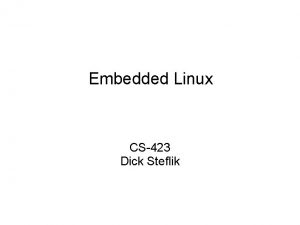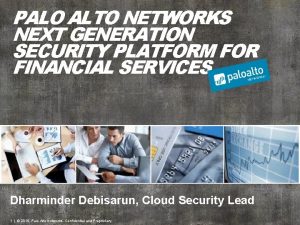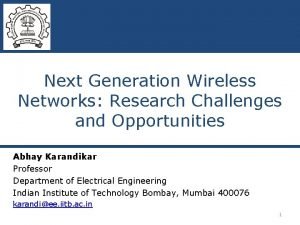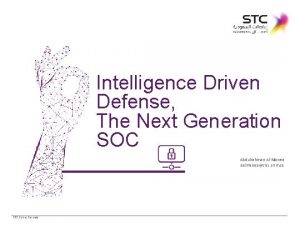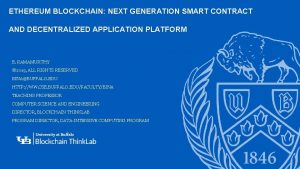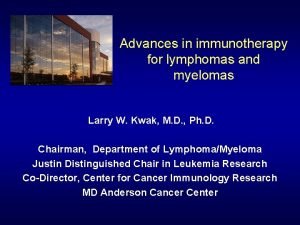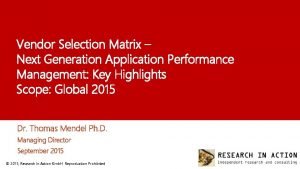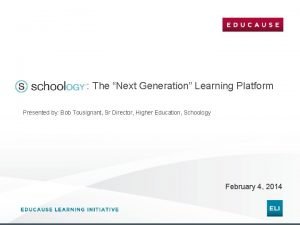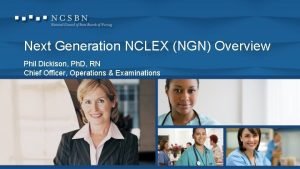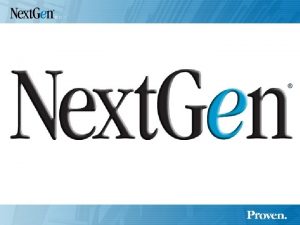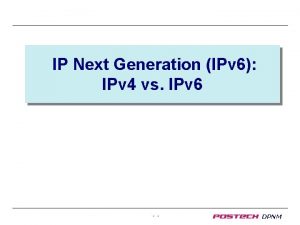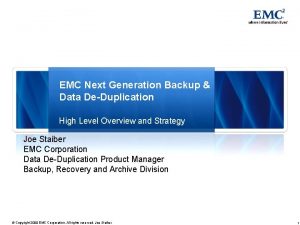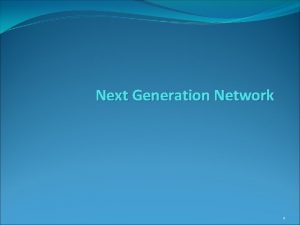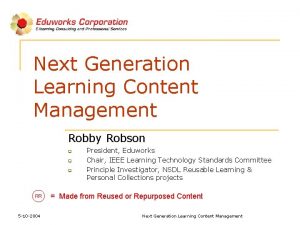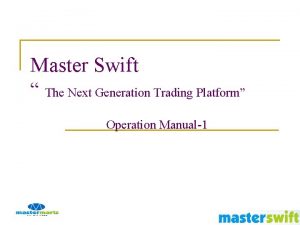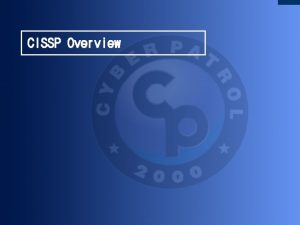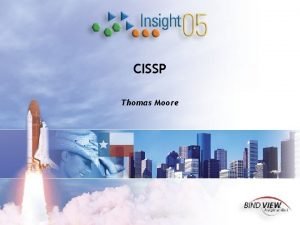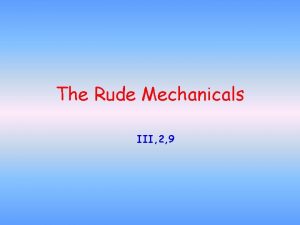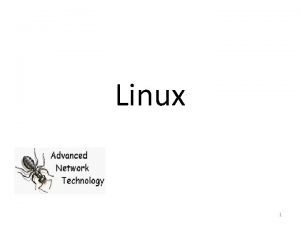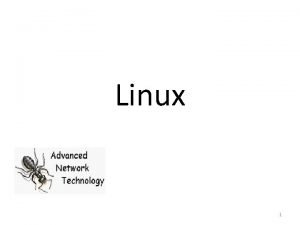Next Generation Data Forensics Linux Thomas Rude CISSP
























- Slides: 24

Next Generation Data Forensics & Linux Thomas Rude, CISSP August 2002

Agenda Overview of Data Forensics ● Agents of Change ● Future of Data Forensics ● Linux as Next Generation Data Forensics platform ● Questions ● Thomas Rude, © 2002

Data Forensics, Infancy Historically data forensics has focused on imaging and analyzing standalone personal computers (PCs). - small hard drives - DOS-based utilities Thomas Rude, © 2002

Evolving Data Forensics First agents of change; - significantly larger hard drives (>500 MB) - significant increase in number of PCs - increase in use of PCs in crimes Thomas Rude, © 2002

Evolving Data Forensics Second agents of change; - significant increase in use of non-PC devices - servers, handhelds, digital cameras, etc. - increase in non-Windows operating systems - Mac. OS, UNIX flavors, Linux flavors, etc. Thomas Rude, © 2002

Evolving Data Forensics Where does the data forensic community stand today? Electronic data is stored in many devices, ranging from wrist watches, telephony boxes, and enterprise servers. Increasingly forensic examiners are dealing with 'non-traditional' PCs, corporate security personnel are first responders to incidents, and critical data is residing in volatile system memory. Thomas Rude, © 2002

NG Forensics Defined "The scientific process of imaging and analyzing data stored in any electronic format, for the purpose of reporting findings in a neutral manner, with no predisposition as to guilt or innocence. " farmerdude, 2002 Thomas Rude, © 2002

NG Forensics & Linux Next generation data forensics platform of choice? Linux Thomas Rude, © 2002

NG Forensics & Linux What makes Linux so powerful? - everything, including hardware, is a file - support for numerous file system types - ability to analyze a live system in a minimally invasive manner - ability to chain commands - ability to monitor and log processes & commands - ability to review source code - ability to create bootable media Thomas Rude, © 2002

NG Forensics & Linux File Recognition within Linux; - ease of replication (clear text config files) - seeing everything as a file allows for a degree of control over that file - degree of security - degree of granularity over how the operating system environment behaves Thomas Rude, © 2002

NG Forensics & Linux File Recognition within Linux; - So what is the benefit to the forensic examiner? - examiner has ability to control how the operating system touches devices (I. E. , consistent mounting of devices in a read only manner that does not alter the data on the evidentiary device) Thomas Rude, © 2002

NG Forensics & Linux Numerous File System Types Support; - Linux can interpret many file system types, including; ext 2, ext 3, FFS, HPFS, FAT, VFAT, NTFS, ISO 9660, UDF, UFS, etc. - Win 32 can interpret a few file system types, including; FAT, VFAT, and NTFS Thomas Rude, © 2002

NG Forensics & Linux Numerous File System Types Support; - So what does this mean for the examiner? - If you use Win 32 as your platform for analysis and you wish to view data in its logical format, then you must have a driver specific file system type written. - Win 32 + no fs driver = one big blob for that Thomas Rude, © 2002

NG Forensics & Linux Numerous File System Types Support; - So what does this mean for the examiner? - If you use Linux as your platform for analysis and you wish to view data in its logical format, chances are you already have driver for that fs type availabe for use a - Linux + fs driver = pretty logical format Thomas Rude, © 2002

NG Forensics & Linux Analyzing a Live System, Minimally Invasively; - Almost all compromised systems have trojaned commands - Linux provides a method for analyzing this compromised system, in its running state, in a minimally invasive manner Thomas Rude, © 2002

NG Forensics & Linux Analyzing a Live System, Minimally Invasively; - The goal of all data forensic work is to not alter the evidence wherever possible - Extremely difficult to perform - However, Linux can prove helpful Thomas Rude, © 2002

NG Forensics & Linux Analyzing a Live System, Minimally Invasively; - Trusted binaries on trusted media (floppy, CD) - Use Vi editor to issue commands without stepping all over the system logs - Commands such as 'script' can be used in conjunction with 'time' to provide an accurate log what commands were issued and at what time of Thomas Rude, © 2002

NG Forensics & Linux Chaining Commands; - commands useful to the forensic examiner may be chained together in order to increase productivity - example; dd if=/dev/hdd conv=noerror bs=1024 of=image 1 2>> image_error_log ; md 5 sum image 1 > image 1_hash Thomas Rude, © 2002

NG Forensics & Linux Chaining Commands; - Linux also provides ability to redirect standard input/output/error - examples; dd if=/dev/sda conv=noerror bs=1024 | gzip > scsi_image. gz dd if=/dev/sda conv=noerror bs=1024 | split -b 640 m cat xa* > new_sda_image_file Thomas Rude, © 2002

NG Forensics & Linux Ability to Monitor and Log Processes & Commands; - Linux provides an environment rich in auditing and logging user activities - Value to forensic examiner? Trail of what happened when and by whom or what. - Commands include; script, w, pstree, ps, strace, lsof, etc. Thomas Rude, © 2002

NG Forensics & Linux Source Code Review; - most all commands used by a forensic examiner on the Linux platform are open source, and therefore, their code is freely available for review - allows for customization of code - more importantly, allows for increased technical knowledge (knowing what's happening 'behind the scenes') and ability to defend tool Thomas Rude, © 2002

NG Forensics & Linux Trusted Boot Media; - Whether a floppy diskette or a CD-ROM, bootable Linux media can be created and customized - Allows forensic examiner to create personalized toolsets for most any situation, as well as trusted binaries to use for processing Thomas Rude, © 2002

NG Forensics & Linux What does all of this mean? - The power of Linux empowers the forensic examiner Thomas Rude, © 2002

NG Forensics & Linux Questions? Thomas Rude, © 2002
 X.next = x.next.next
X.next = x.next.next First generation antipsychotics
First generation antipsychotics From generation to generation we worship you
From generation to generation we worship you Kernel linux security module m1 support
Kernel linux security module m1 support Cs423
Cs423 Palo alto traps gartner
Palo alto traps gartner Next generation wireless communication market
Next generation wireless communication market Ncsbn next generation nclex
Ncsbn next generation nclex Intelligence driven defense
Intelligence driven defense Blaockchain
Blaockchain Next generation vaccine
Next generation vaccine Next generation application management
Next generation application management Next generation lms
Next generation lms Palo alto networks next generation security platform
Palo alto networks next generation security platform Next generation text service
Next generation text service Next gen nclex
Next gen nclex Electrical energy
Electrical energy Next gen emr
Next gen emr Ip next generation
Ip next generation Next generation backup
Next generation backup Educating the next generation of leaders
Educating the next generation of leaders Ngn
Ngn Robby robson
Robby robson Next gen math standards
Next gen math standards Next generation trading platform
Next generation trading platform




